The Instagram page OldHKinColour features vintage images of Hong Kong which have been colourised, or colourised and animated, with a view to promoting public education. HPC invited the team running the project, which has used some of our images, to provide an introduction to their methods and objectives.
OldHKinColour promotes the culture of Hong Kong with colourised images/animations, presented with bilingual descriptions. The Instagram page began in late 2019 and is managed by a Hong Kong-based research team specialising in cultural history, digital humanities, artificial intelligence and intersemiotic translation.
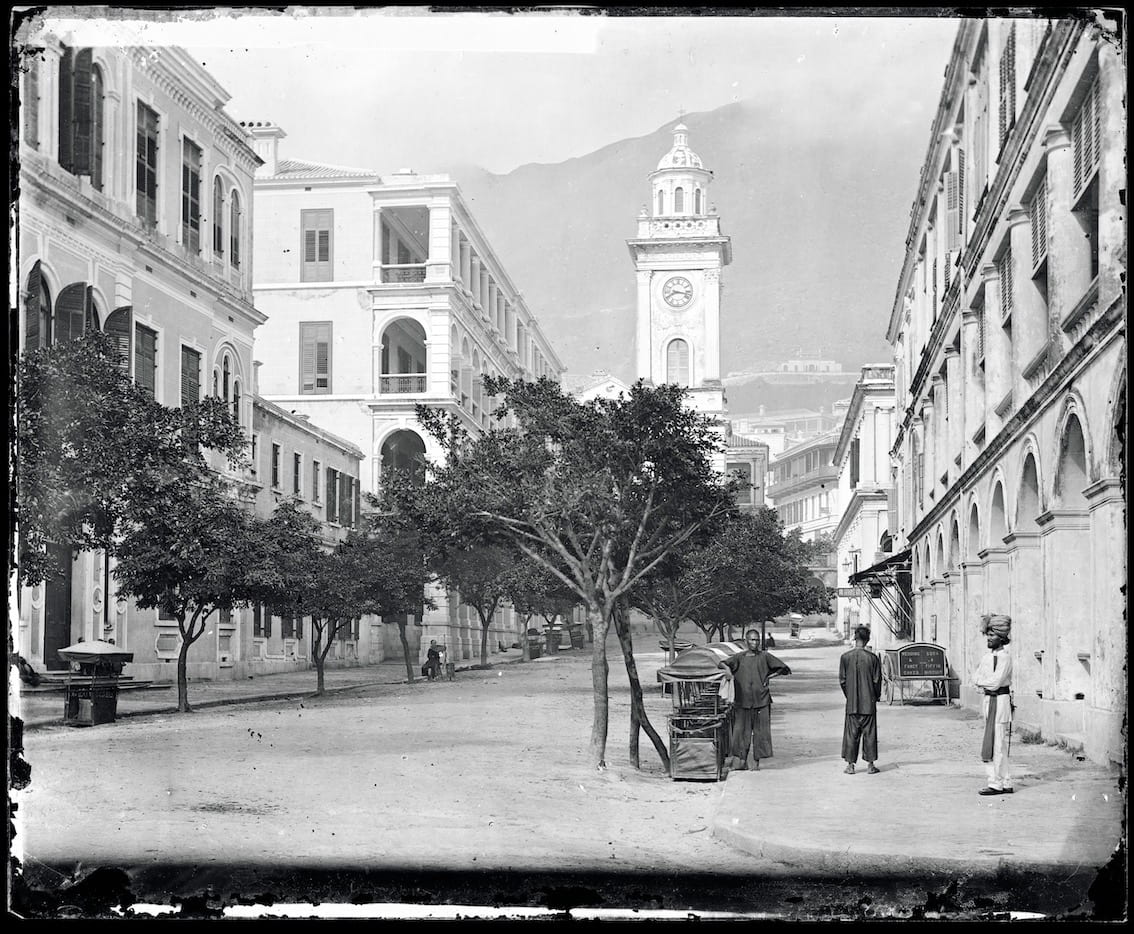
Pedder Street and the Clock Tower, Hong Kong, c.1869. Photograph by John Thomson.
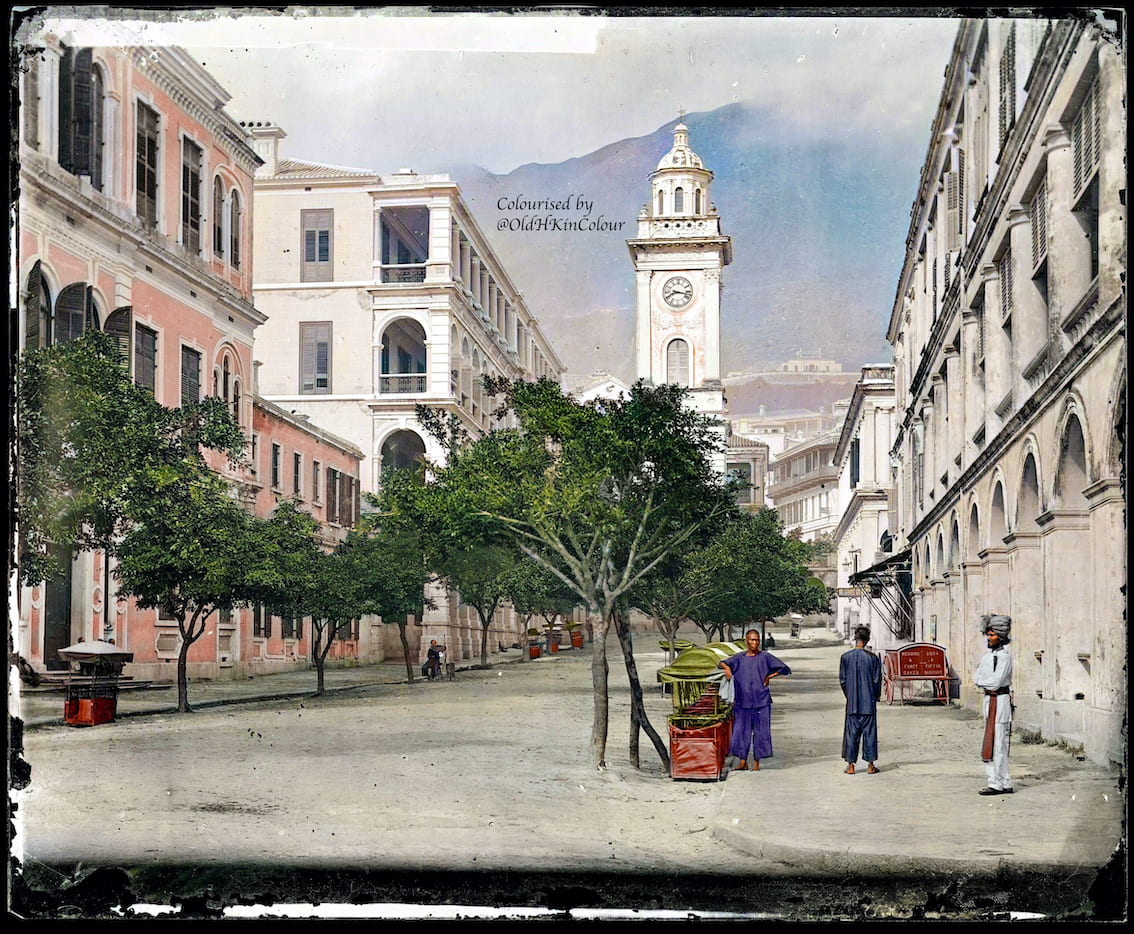
Pedder Street and the Clock Tower, Hong Kong, c.1869. Photograph by John Thomson. Colourised by OldHKinColour, bringing out the differentiating colour of clothing and the pastel coloured buildings.
Our criteria for the selection of images are that they should demonstrate the traditions and customs of Hong Kong, and/or reveal everyday life, and/or reflect the aesthetics of the city. Our team is particularly fond of photographs by Harrison Forman (1904-1978) and John Thomson (1837-1921), from which we can catch a glimpse of the early days of Hong Kong.
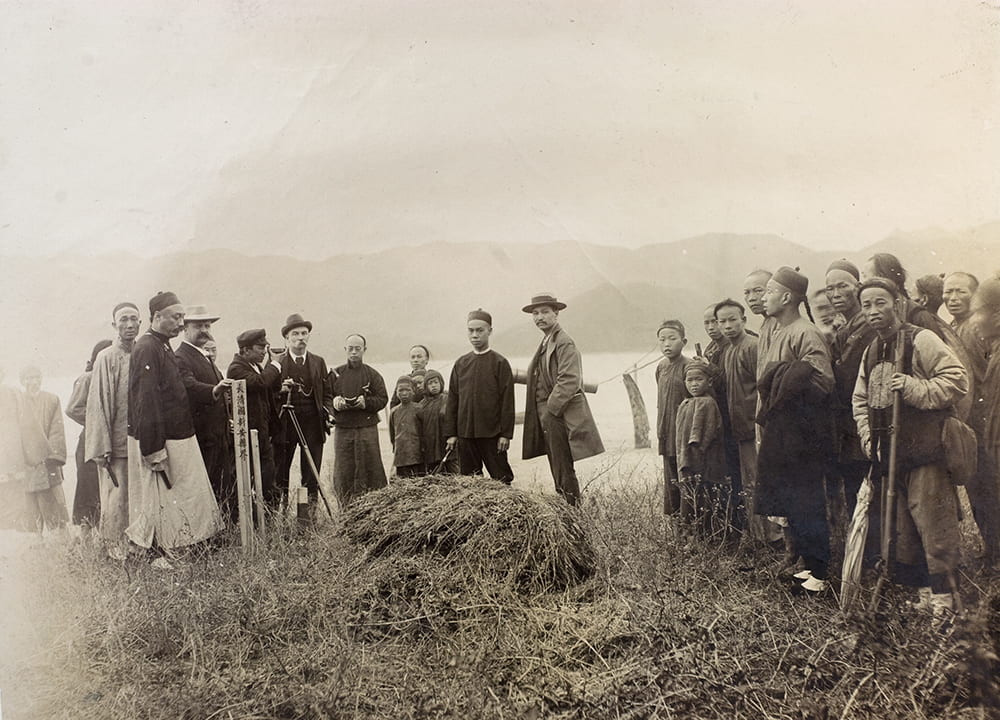
Stewart Lockhart and Wang Cunshan (王存善) fixing the first boundary mark on the shore at Stanley Inlet, Hong Kong, 1898. HPC ref: NA22-01.

Stewart Lockhart and Wang Cunshan (王存善) fixing the first boundary mark on the shore at Stanley Inlet, Hong Kong, 1898. HPC ref: NA22-01. Colourised by OldHKinColour.
The OldHKinColour team consider AI-based learning to be a significant and innovative pedagogy for students of history. Traditionally, textual resources, including newspapers and official documents, are the primary sources for studying history. Some people may find text resources dull and lose interest. Visual technology, including AI-driven image restoration and 3D rendering of historical photographs has developed rapidly in recent years. We can apply these developments to the teaching of arts subjects, including the history of Hong Kong, in order to enhance the effectiveness of public education in traditional culture.
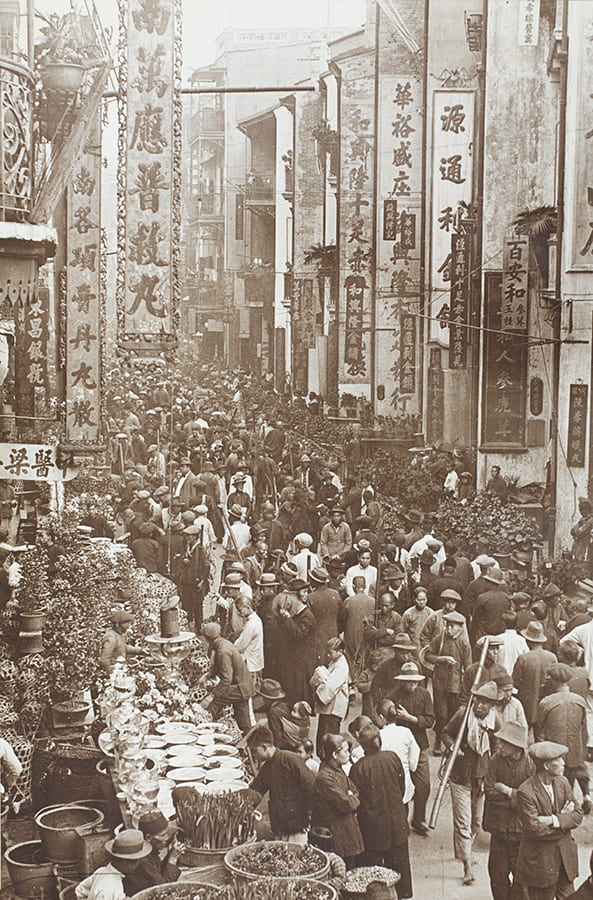
Chinese New Year Fair, Hong Kong, c.1924. Photograph by Denis H. Hazell. Source: ‘Picturesque Hong Kong’ (Ye Olde Printerie Ltd., Hong Kong, c.1925). HPC ref: Bk09-30.
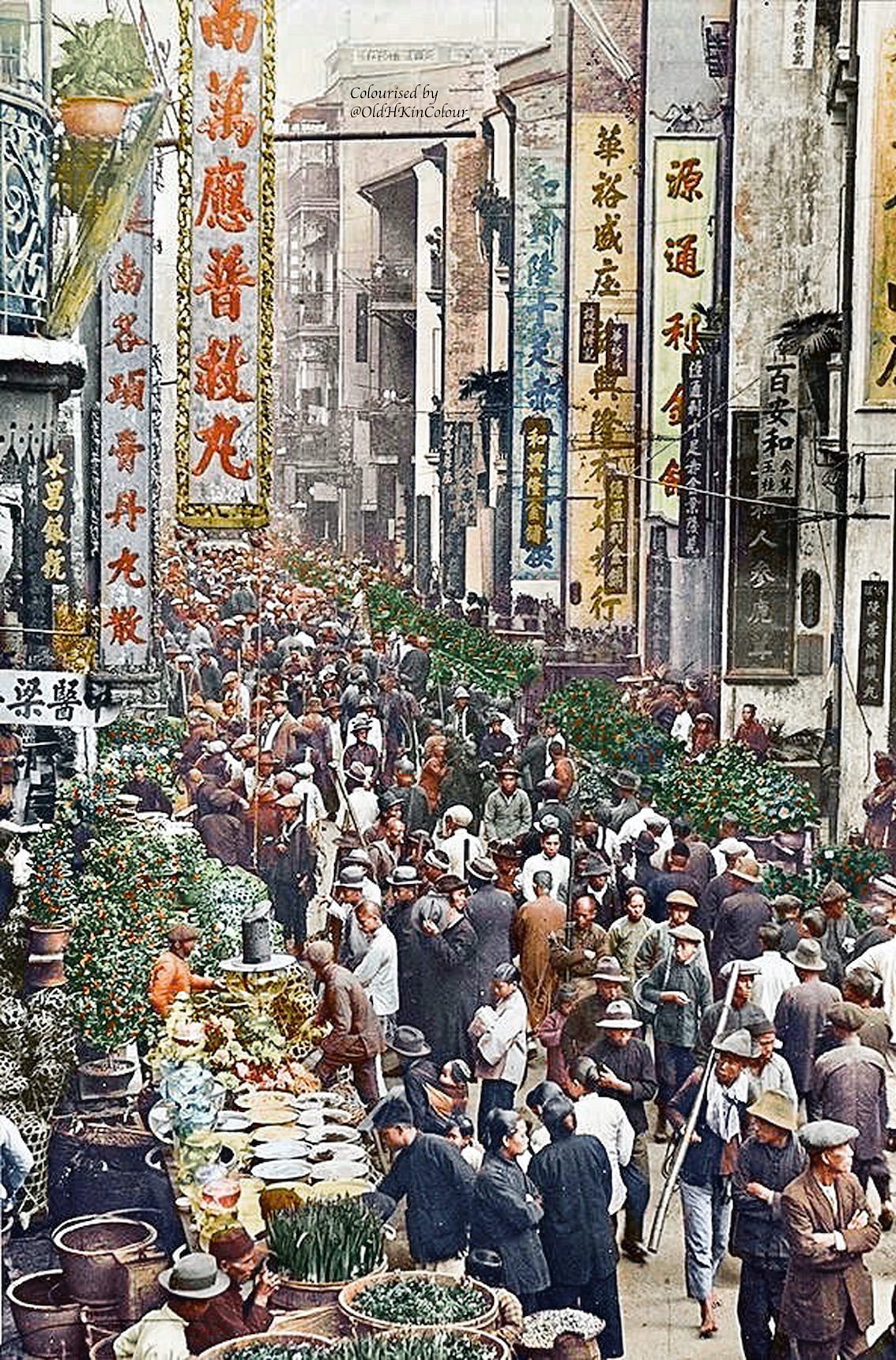
Chinese New Year Fair, Hong Kong, c.1924. Photograph by Denis H. Hazell. Source: ‘Picturesque Hong Kong’ (Ye Olde Printerie Ltd., Hong Kong, c.1925). HPC ref: Bk09-30. Colourised by OldHKinColour, which is informative as it draws attention to the plants.
The process of image colourisation generally consists of three major steps: data gathering, pre-processing and post-editing.
Data gathering
First, we collect digital copies of original monochrome photographs, sourced mainly from online archives and academic institutions, such as Historical Photographs of China, The University of Wisconsin-Milwaukee Libraries Digital Collections and Harvard-Yenching Library. Most of these images of Victoria City (Central Hong Kong) date from the late 1860s to the 1950s.
Pre-processing
We enhance the image quality and resolution with the latest technology of machine learning and the application of artificial neural networks.
Post-editing
We colourise the pre-processed images manually by referring to a wide variety of historical sources, such as newspapers, magazines, official documents, memoirs and film recordings, with a view to restoring the original colours as accurately as possible. This procedure usually takes more than an hour to complete.

Pottinger Street, Hong Kong, c.1955-56. Photograph by Harrison Forman. Source: The University of Wisconsin-Milwaukee Libraries. Digital ID: fr301598.
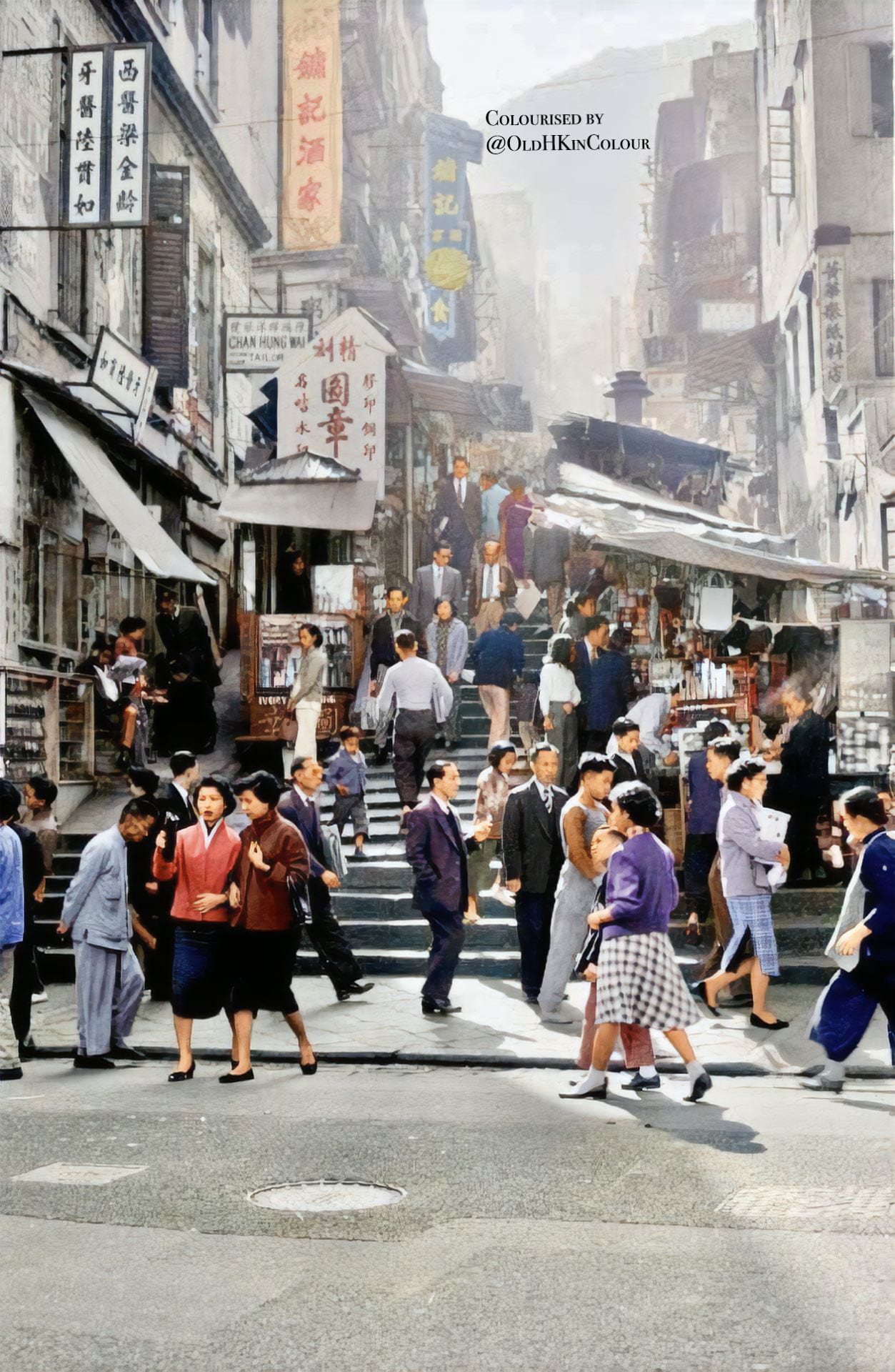
Pottinger Street, Hong Kong, c.1955-56. Photograph by Harrison Forman. Source: The University of Wisconsin-Milwaukee Libraries. Digital ID: fr301598. Colourised by OldHKinColour, the woman’s red jacket providing a compositional anchor not obvious in the original black and white.
The colourised images of urban life in Hong Kong in the 1940s/50s, show the architecture of Victoria City was undoubtedly magnificent and breathtaking. However, many people suffered from poor living conditions and struggled for their livelihoods with indomitable spirit. There are some incredible stories behind the historic images and buildings, and we have been introducing them via IG stories and quizzes. We will continue to design a wide spectrum of activities with these channels to cultivate instagrammers’ interest in learning history and preserving cultural heritage.

Queen’s Road Central, Hong Kong, 1950s. Photograph by Harrison Forman. Source: The University of Wisconsin-Milwaukee Libraries. Digital ID: fr301598.

Queen’s Road Central, Hong Kong, 1950s. Photograph by Harrison Forman. Source: The University of Wisconsin-Milwaukee Libraries. Digital ID: fr301598. Colourised by OldHKinColour, the signboards in colour enlivening the view.
Our plans for the future include further promoting the above techniques and developing new educational tools which can be used in other disciplines. More research projects on digital history will be launched, aiming to foster heritage conservation. We also plan to offer complimentary short courses on the history of Hong Kong and on image restoration through IG Live.

A food store at the junction of Des Voeux Road Central and Douglas Road, Hong Kong, c.1941. Photograph by Harrison Forman. Source: The University of Wisconsin-Milwaukee Libraries. Digital ID: fr200235.
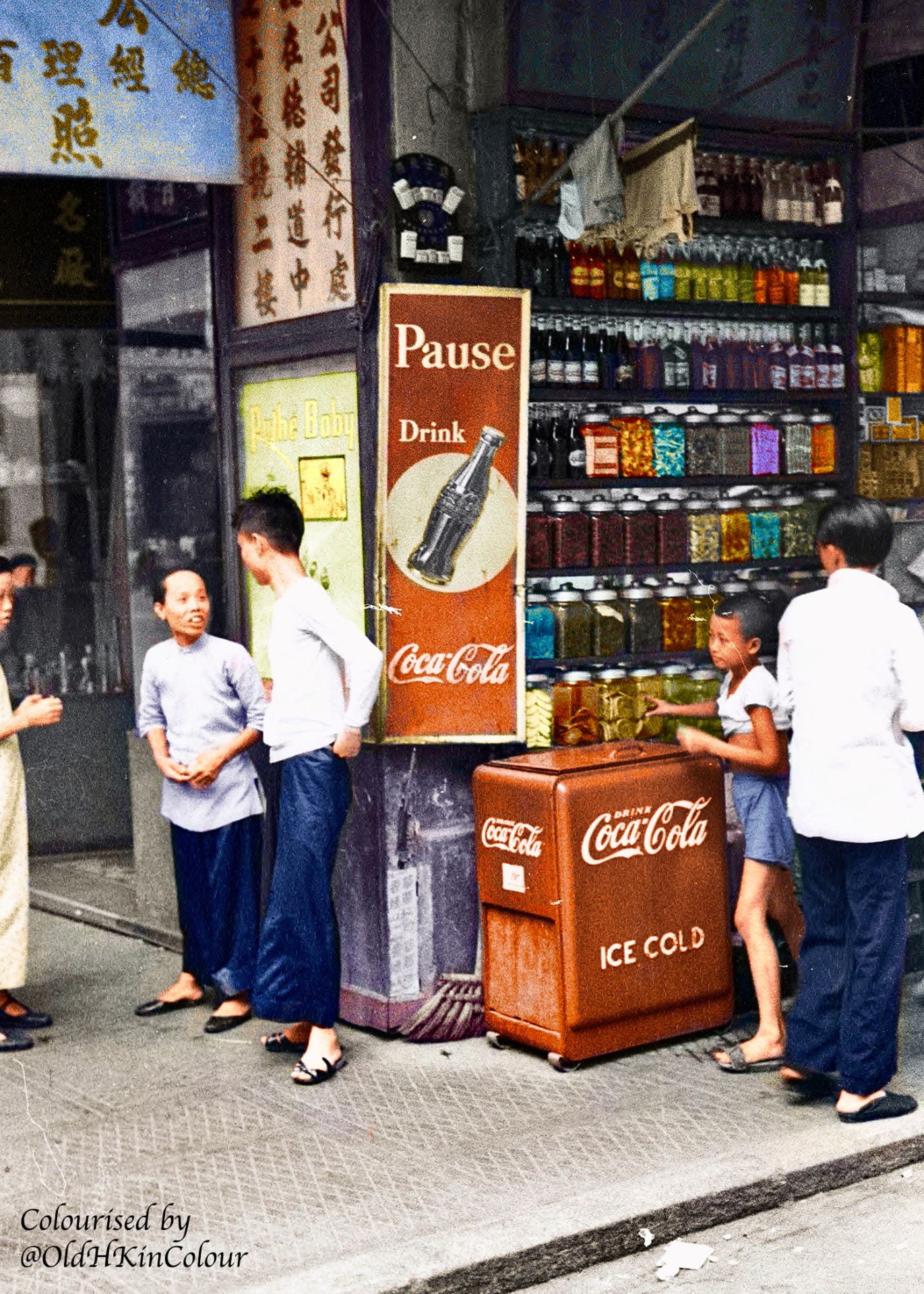
A food store at the junction of Des Voeux Road Central and Douglas Road, Hong Kong, c.1941. Photograph by Harrison Forman. Source: The University of Wisconsin-Milwaukee Libraries. Digital ID: fr200235. Colourised by OldHKinColour.
OldHKinColour: https://www.instagram.com/oldhkincolour/.
